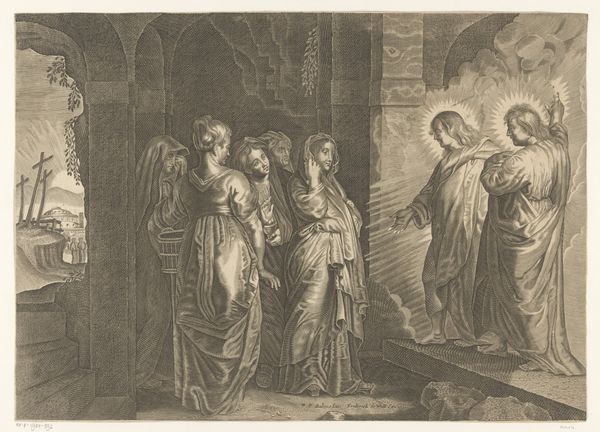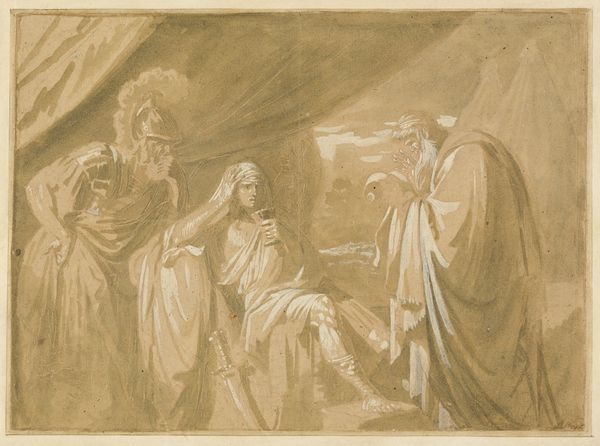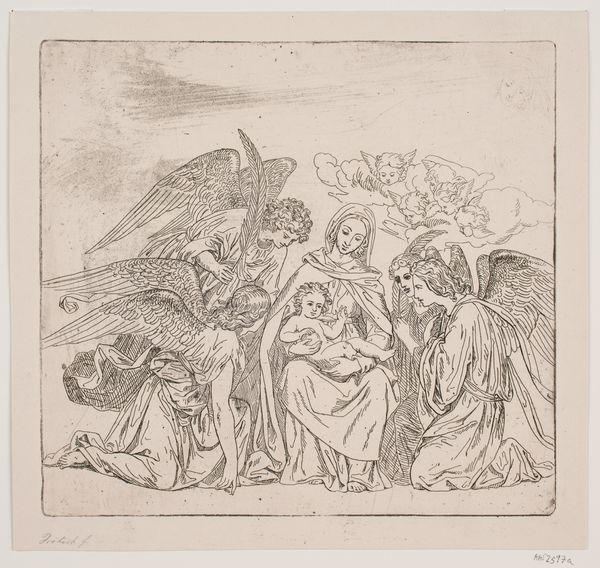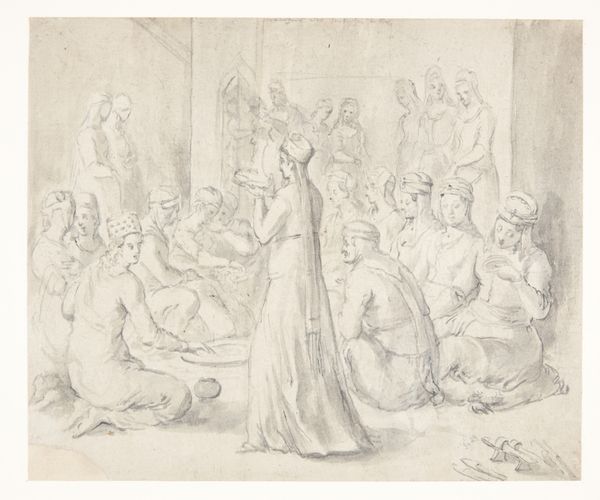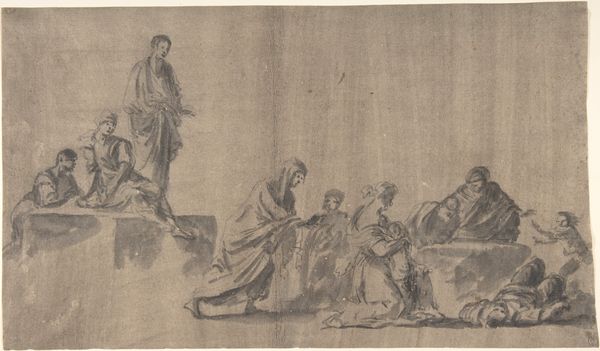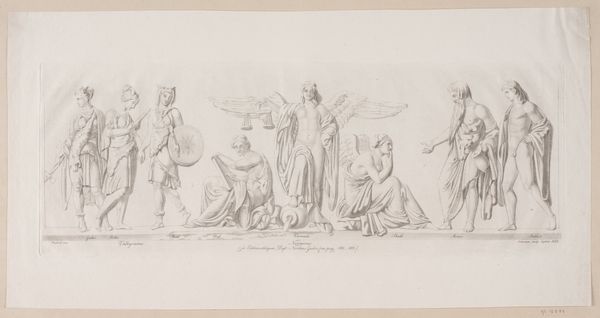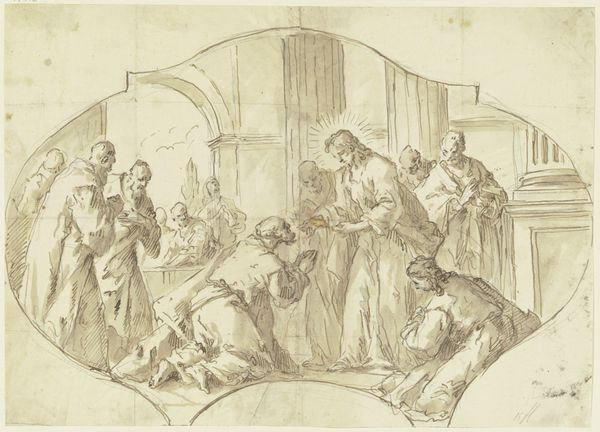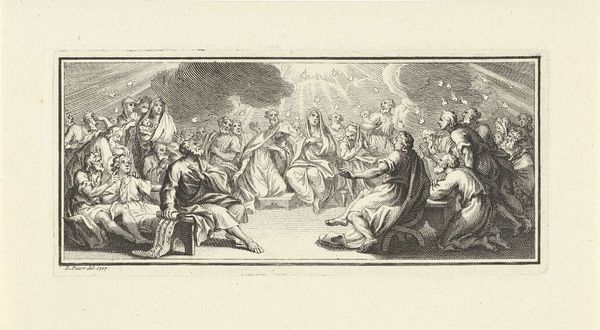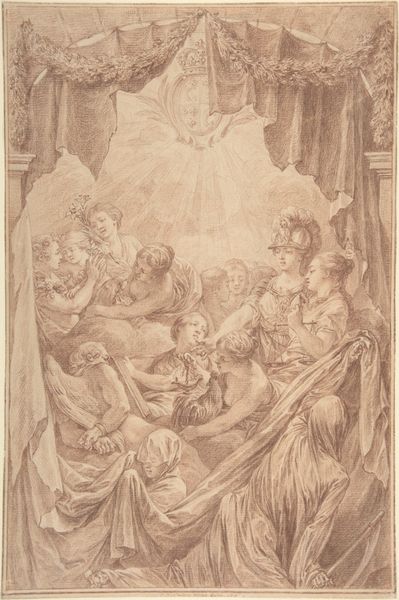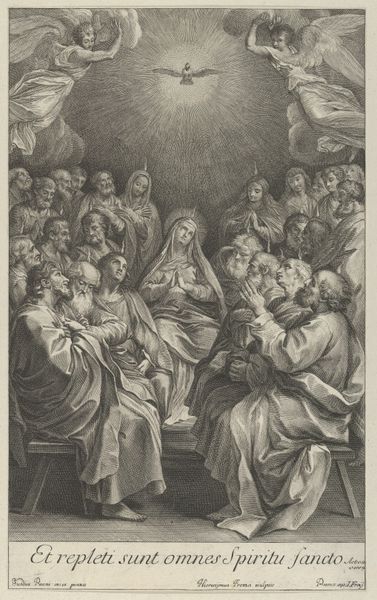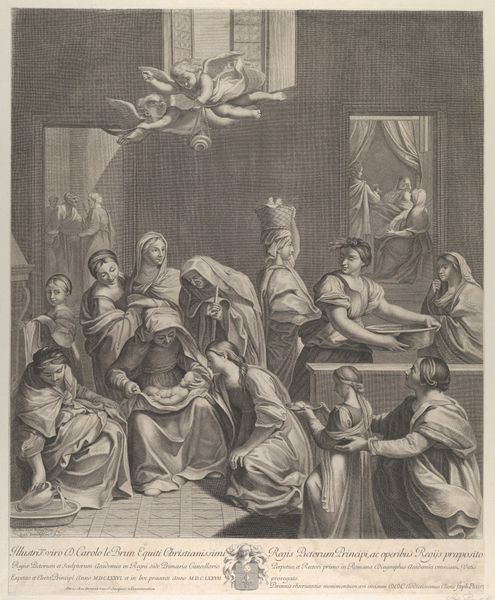
Dimensions: Sheet (Trimmed): 11 13/16 × 18 5/8 in. (30 × 47.3 cm)
Copyright: Public Domain
Editor: We’re looking at “Descent of the Holy Ghost,” an engraving by Stefano Mulinari, made sometime between 1760 and 1790. It depicts this really dramatic scene with a divine light shining down on a group of figures. I’m struck by how theatrical it feels, like a stage production. What’s your take on it? Curator: That's a good observation about the theatricality. Think about the role engravings like this played at the time. They weren't just artistic expressions, but vehicles for disseminating religious narratives and reinforcing social and religious hierarchies. Consider who the intended audience was for such an image. Was it for personal devotion, or perhaps for teaching purposes within the Church? Editor: So, the medium itself – engraving – would influence the message? Curator: Absolutely. The act of reproducing this scene made it accessible to a wider audience. It allows the narrative to enter domestic spaces, subtly shaping beliefs and behaviours. Notice how the figures react: some are awe-struck, others appear to be almost collapsing. It encourages viewers to embody similar feelings of reverence and submission to divine authority. Does the uniformity in colour suggest a universal message? Editor: Interesting! It's like the artist is not just illustrating a scene, but directing how the viewer should react to it. And you make a good point on how universal the message could be due to the simple colour palette. I hadn't thought about that before. Curator: Precisely. And consider how institutions like the church actively employed art to maintain power and influence, not through imposing images but by wide image dispersal, helping shape public consciousness and solidify its authority through images like this, which would not have the impact had this been confined within closed circles. Editor: This really illuminates how the historical context profoundly shaped not only the image itself, but its reception too. I never realized how intentional that design was! Curator: Indeed. Art is rarely created in a vacuum; considering it’s public function during the Baroque era sheds new light on what may at first glance seem to be just a religious scene.
Comments
No comments
Be the first to comment and join the conversation on the ultimate creative platform.


